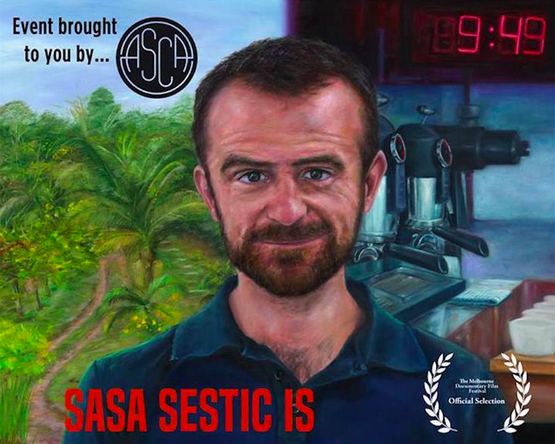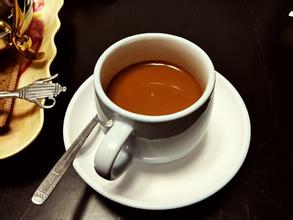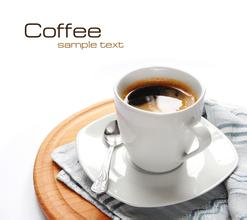Where the wind of boutique coffee is going, it mainly depends on this game.
In 2015, Sasa Sestic, a barista born in Serbia and settled in Canberra, Australia, won the championship at World Barista Championship (WBC), the most important annual competition in the coffee industry.
A year later, The Coffee Man, a documentary about Sasa, came out. These include the introduction of his personal experience as a professional handball player, the details of the game when he and his team took milk to Seattle, the 2014 WBC champion and the help of Japanese barista Hidenori Izaki, and his visit to the coffee farm outside the game. It's a well-prepared documentary.
Compared with this blockbuster documentary, the title of WBC champion is indeed rich. Almost every barista has at least heard of the competition organized by the World Coffee Association (WCE).
The competition first selects local winners from more than 20 countries and invites them to participate in international competitions. The final competition is limited to 15 minutes, and baristas are required to provide four judges with 12 cups of coffee, including espresso, cappuccino and creative coffee. This part is not only about skills, but also about the coffee beans they choose, the creative methods they use, and so on.
During the Izaki competition in 2014, he mentioned his La Mesa landowner Enrique Navarro several times and illustrated his name and appearance in an introduction to the judges. Later, with the victory of Izaki, La Mesa Manor gained a better reputation in the industry.
Enrique Navarro and Hidenori Izaki
The same is true of Sasa, in addition to being the operator and barista of Ona Coffee, he is also a judge of the coffee bean evaluation and pricing competition Cup of Excellence and the initiator of the origin plan, which often gives him the opportunity to go deep into the country of origin of coffee and carefully select it.
During the competition, he repeatedly thanked Colombian coffee partner Camilo coffee farmers for picking small quantities of coffee beans for him, and specially set up a shading system to protect coffee from sunburn and gain 4% more sugar.
Another technology that will be pushed into the spotlight in the competition is technology related to coffee beans, such as Sasa, which brings Camilo's red wine treatment (Wine Making) to people's attention.
This method draws lessons from the principle of red wine production, placing coffee beans in stainless steel containers containing carbon dioxide to prevent oxidation, which can be better controlled by temperature and humidity to keep its aroma non-volatile. After Sasa won the championship, the red wine treatment with three internal categories (acetic fermentation / lactic acid fermentation / mixed fermentation) became popular in the boutique coffee world. in addition to the treatment of coffee beans in the sun and washing, the more direct result is that the coffee beans under this treatment also get higher prices.
Last March, WBC updated its rulebook. Starting with 2016 WBC this year in Dublin, Ireland, baristas will be restricted to coffee machines and bean grinders, VIctoria Arduino VA388 ("Black Hawk") and MAHLK ö NIG K30 Vario. The former is the semi-automatic coffee machine introduced by Starbucks to high-end selection stores, and WBC is undoubtedly a good exposure platform.
By the way, the 2016 WBC will debut on the 22nd of this month, Dublin time. It is worth paying attention to how the taste and technical wind of boutique coffee will change.

Important Notice :
前街咖啡 FrontStreet Coffee has moved to new addredd:
FrontStreet Coffee Address: 315,Donghua East Road,GuangZhou
Tel:020 38364473
- Prev

These 10 coffees in Dongguan were rated as the most growing brands
Wu Sensheng, founder of the nose coffee brand, was very excited to hear that he won the first place. He came to Dongguan with his father when he was in high school. Because I love coffee very much, I opened a coffee shop in Dongguan after graduation. At present, it has grown to four. He even introduced Yunnan coffee trees to Dongguan, aiming to build a coffee industry chain. National Barista Evaluator
- Next

The domestic coffee market is subdivided, and consumers' choices are more personalized.
Coffee is a familiar drink for white-collar workers who travel around office buildings-coffee shops are the preferred place for daily business meetings, and coffee is also a refreshing tool for staying up late. Whether you are an accomplished businessman, an independent musician, a writer, a white-collar office worker who is working hard in life, or a student who is busy studying, a coffee shop
Related
- Why does hot American coffee taste bitter? Difference in proportional concentration between hot American and ice American
- Is espresso stored overnight in the refrigerator harmful to your body? Is frozen coffee better than freshly ground coffee?
- What parameters and proportions of water temperature should be used to grind and brew fresh coffee beans? Why can't I drink freshly roasted coffee right away?
- Customers have "changed" Manner's new products! Shop assistant: Please don't mess around!
- Remove sockets in customer areas at Starbucks stores?! Netizen: I won't go if I really tear it down
- What is the difference between the taste steps of sun-dried coffee and washed coffee? Why is sun-cured coffee sweeter and washed coffee sour?
- The recipe for salty grapefruit dirty is revealed! Coffee Festival salty grapefruit dirty coffee making materials parameters ratio milk share!
- How about the flavor of Sunlight 74158 at Sidamo Banshaha Mathieu Processing Factory in Ethiopia? 74158 Share the proportion of coffee brewing parameters!
- What effect does Italian American coffee with filter paper have? Will coffee taste better if it is put on filter paper at the bottom of the powder bowl?
- What is the color difference in coffee beans? What are the characteristics of honey processed coffee beans? Why are the anaerobically treated coffee beans uneven in color?

